With the summer in full swing, the Minnesota roads are increasingly dangerous. The fear of auto accidents with injuries and death is getting worse in part because drivers are behaving more recklessly, are speeding more often, drive while distracted and get behind the wheel under the influence.
The time from Memorial Day to Labor Day is commonly referred to with the term the “100 Deadliest Days” because there is an annual spike in auto crashes. To account for the greater risk, Minnesota drivers are given strategic advice to improve safety. Still, the danger persists and after a collision, knowing what to do is a key aspect of moving forward.
Safety steps are encouraged, but accidents are happening at a high rate
The Minnesota Safety Council has provided tips to drivers on how to avoid an accident during the summer. They say that people should check their vehicle for summer by making sure it is in working order. Wearing seat belts is advised and having a first-aid kit can be crucial in an emergency.
While on the road, patience is a virtue and tailgating is not only dangerous, but it can antagonize other drivers. When there is poor weather such as a thunderstorm – as has been a prominent problem across the nation with rampant flooding – drivers should maintain an even greater distance between their vehicle and the vehicle ahead of them.
Since road work is common in the warmer months, being aware of signs and watching for roadside workers can keep them, the driver and their passengers healthy. Most importantly, drivers should not drink and drive, use drugs and drive, drive while distracted or drive while feeling drowsy.
Even when drivers are prepared and cognizant of the dangers they face with summer driving, risks abound. Minnesota State Patrol has seen a deadly uptick in accidents so far. One primary problem has been speeding.
In less than a month, there were 46 fatalities on the state roads. When compared to the first six months of 2020, there was a 44% spike in fatalities connected to speeding. Researchers say that drivers are showing a tendency to drive at excessive speeds.
This is due to wider roads and people having grown accustomed to the freedoms that accompanied the national health crisis. Emptier roadways gave people the opening to go faster and that has not diminished with society’s return to normalcy. Law enforcement has planned campaigns to enforce the laws more strictly as they try to tamp down the number of accidents.
Knowing where to seek help after an auto accident is key
When people need help after an auto accident, they should seek guidance from those they can trust. Contacting professionals who have a strong foothold in the area, know Minnesotans and share their values can be a major difference-maker in reaching a positive outcome.
The first step is to assess the damage. That includes injuries people suffered, medical expenses, lost time at work, property loss and long-term consequences. These are exacerbated if there was a fatality as so often happens during the summer months.
Of course, prevention is the preferred option prior to a crash. Unfortunately, given the propensity for people to drive at excessive speeds, behave recklessly, drive while distracted and the number of inexperienced drivers on the road, no amount of preparation and caution can help. After the auto accident, it is wise to have experienced advice on what steps to take.

